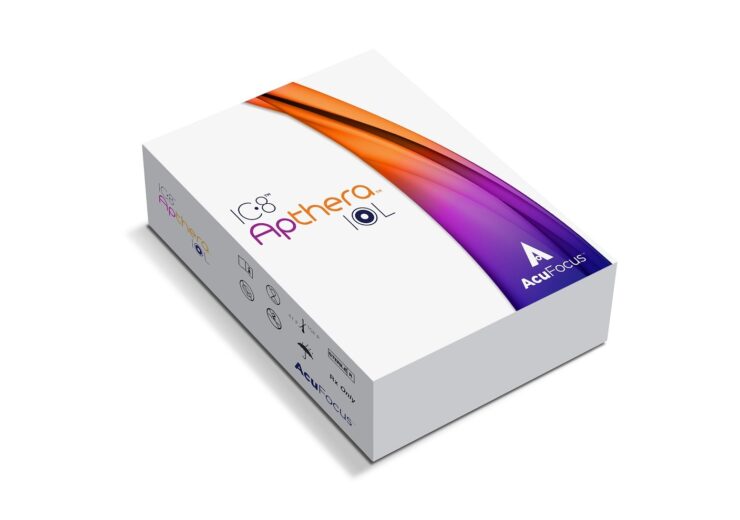The IC-8 Apthera IOL, with an extended depth of focus, leverages the company’s small aperture technology to filter out peripheral defocused light and allows only focused light to reach the retina

Apthera IOL Carton Image. (Credit: Business Wire)
AcuFocus has received the US Food and Drug Administration (FDA) approval for its breakthrough IC-8 Apthera intraocular lens (IOL) for the treatment of cataracts.
The US-based ophthalmic medical device company designed the IC-8 Apthera IOL as a wavefront-filtering intraocular lens.
The IC-8 Apthera IOL is indicated for unilateral implantation in patients who have up to 1.5 diopters (D) of corneal astigmatism in the implanted eye.
Compared to a monofocal or monofocal toric IOL, IC-8 Apthera is said to provide an extended range of vision from distance through near vision.
Apthera IOL is said to be the first extended depth of focus lens indicated for monovision.
It uses the company’s small aperture technology to provide better distance vision, along with clear intermediate and near vision.
In addition, it is the first and only non-toric extended depth of focus IOL approved for 82% of cataract patients who have as much as 1.5D of corneal astigmatism.
AcuFocus president and chief executive officer Al Waterhouse said: “We are delighted to receive FDA approval for our first-of-its-kind Apthera IOL.
“The Apthera IOL represents several firsts for surgeons and patients: the first small aperture IOL to receive FDA approval, the first lens indicated for implantation with a monofocal or monofocal toric IOL in the fellow eye, the first extended depth of focus lens indicated for monovision, and the first non-toric IOL indicated for cataract patients.”
The US FDA approved Apthera IOL based on data from the US Investigational Device Exemption (IDE) study on 453 subjects.
The IDE study evaluated the safety and effectiveness of the Apthera IOL implanted in one eye and a monofocal or monofocal toric IOL implanted in the other eye.
In the study, eyes treated with Apthera IOL maintained 2D of extended depth of focus and showed a 0.91 D of additional range of vision benefit over eyes with monofocal IOL.
The participants in Apthera IOL arm achieved equivalent uncorrected distance vision and superior intermediate and near vision compared to subjects in the control arm.
In addition, people in the Apthera IOL arm achieved comparable binocular contrast sensitivity to control subjects in both photopic and mesopic conditions.
The company intends to begin a limited roll-out of its Apthera IOL in the US later this year.
